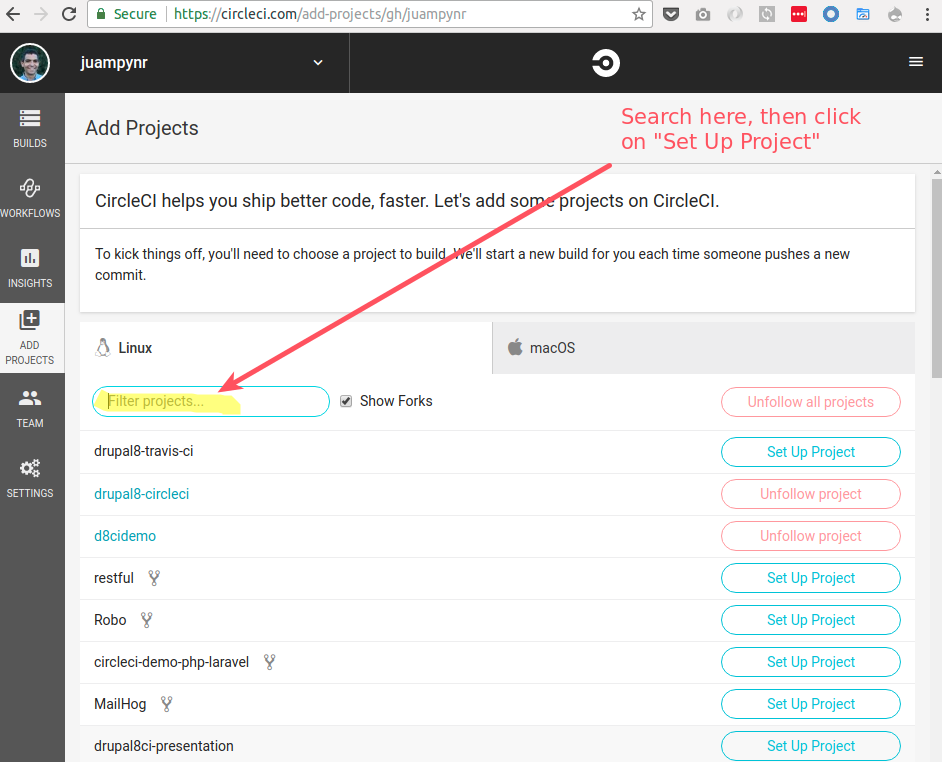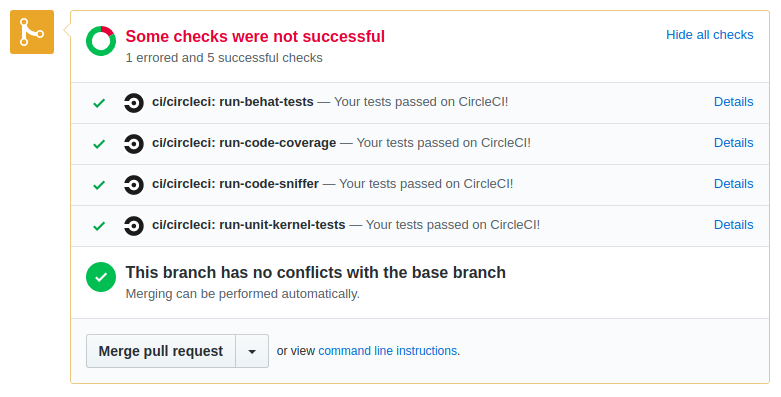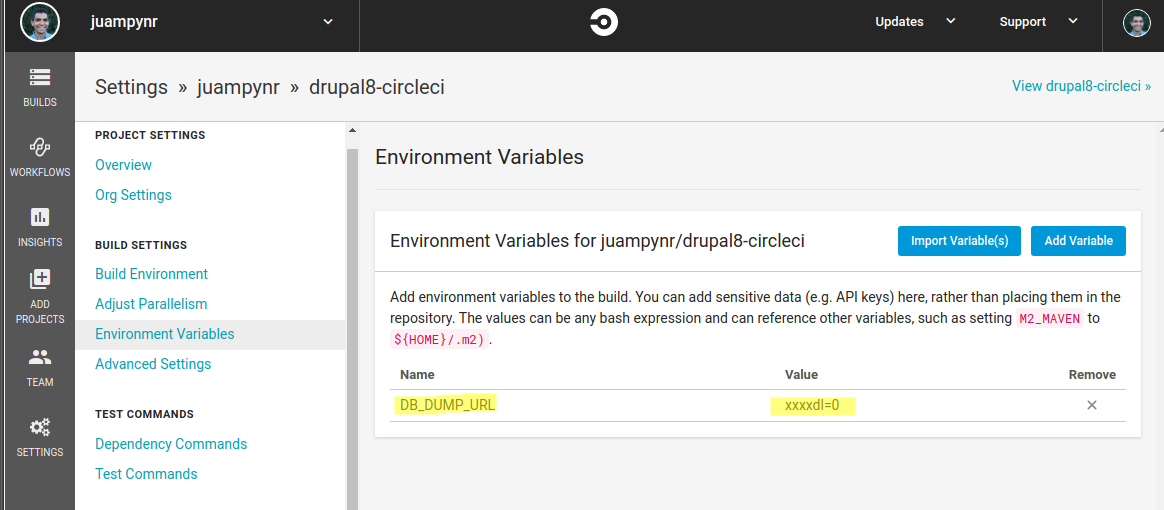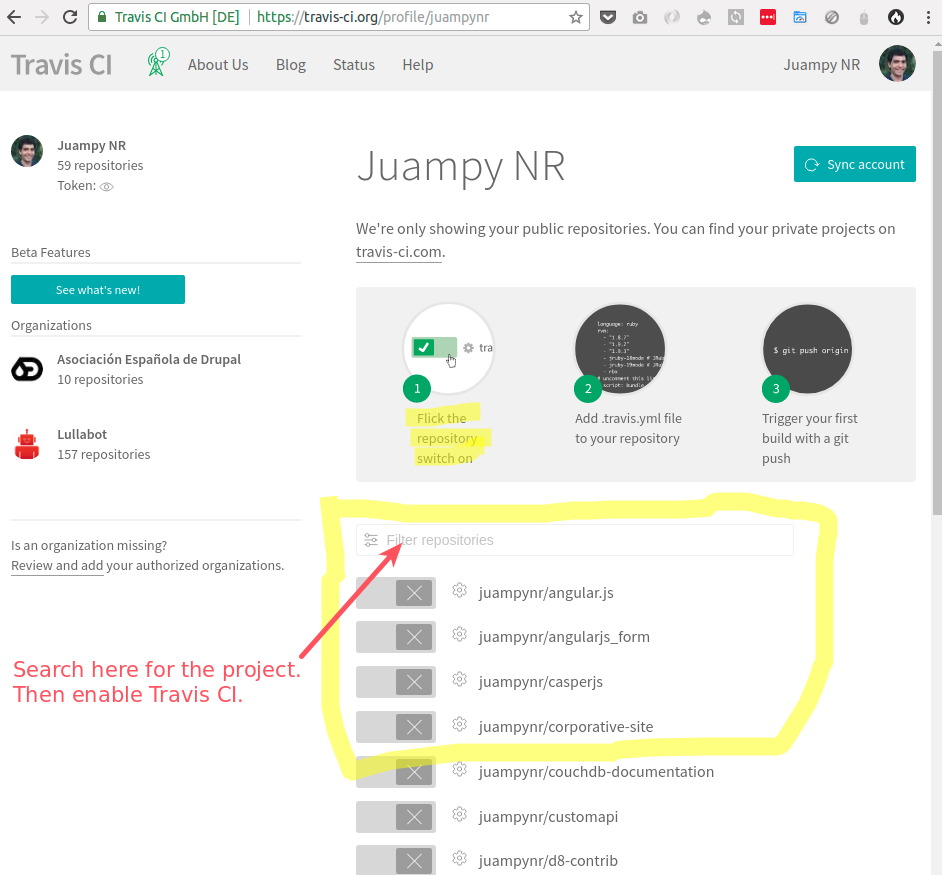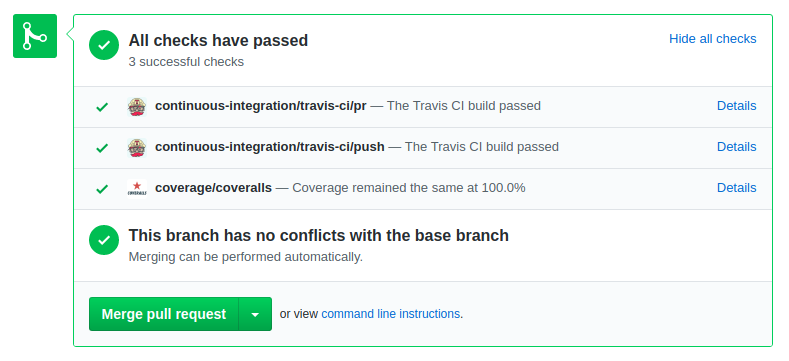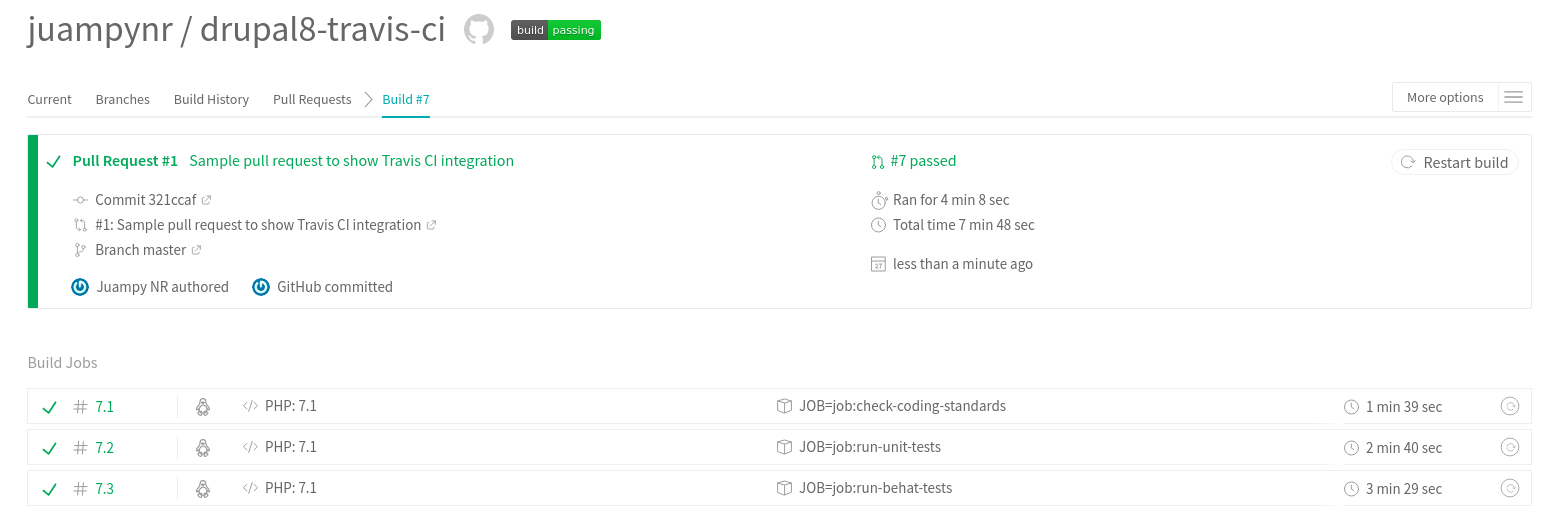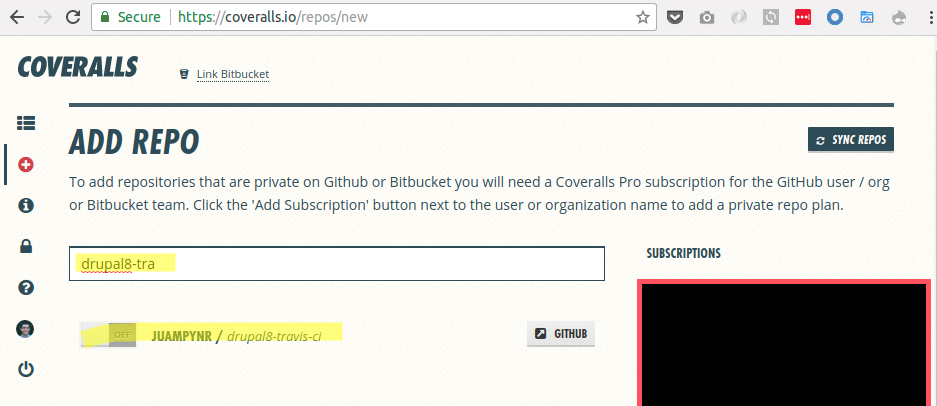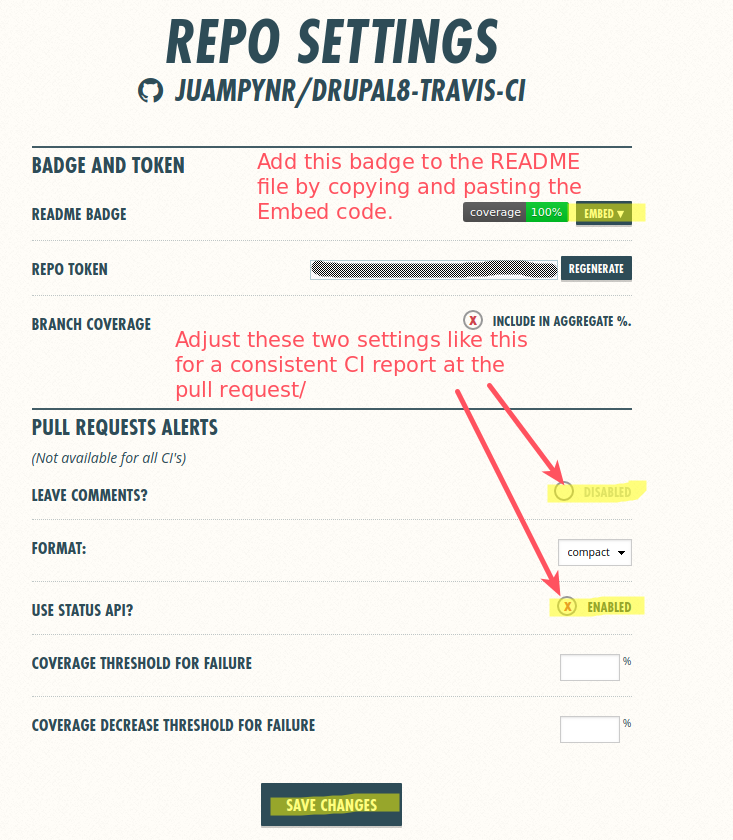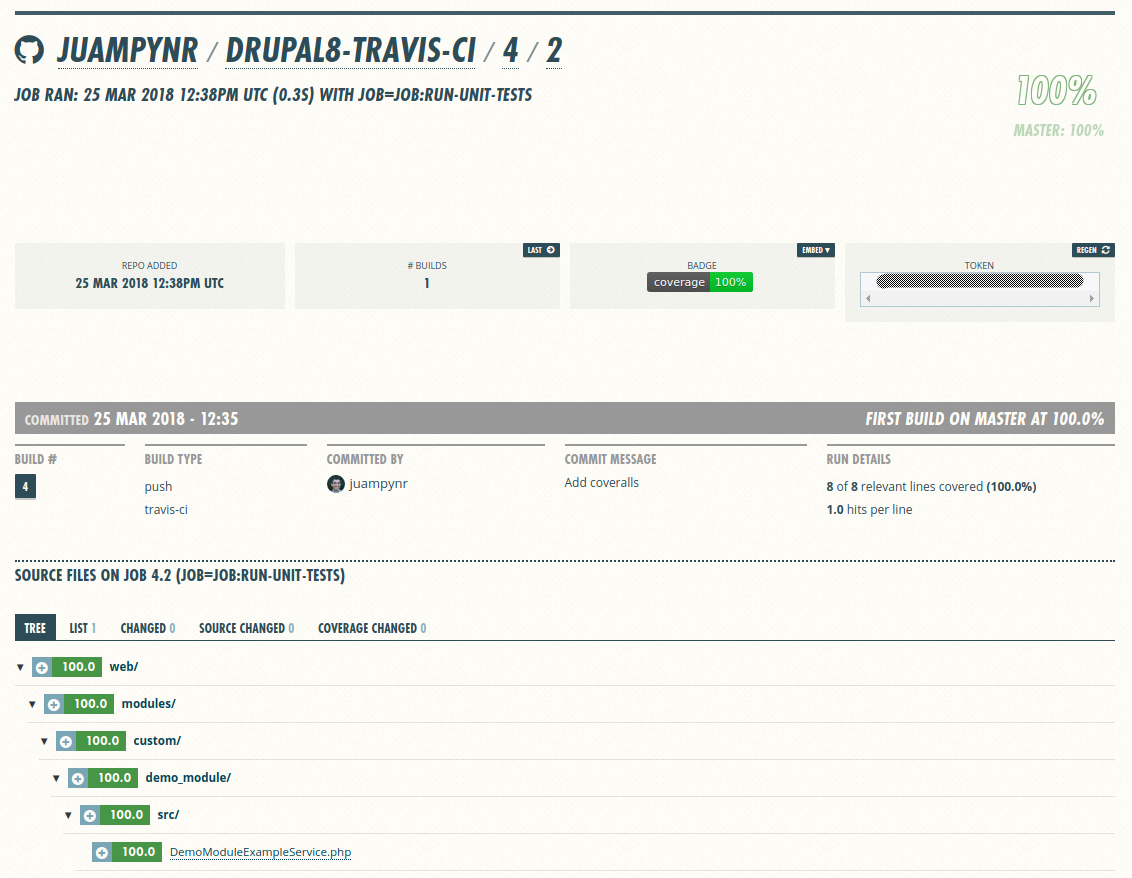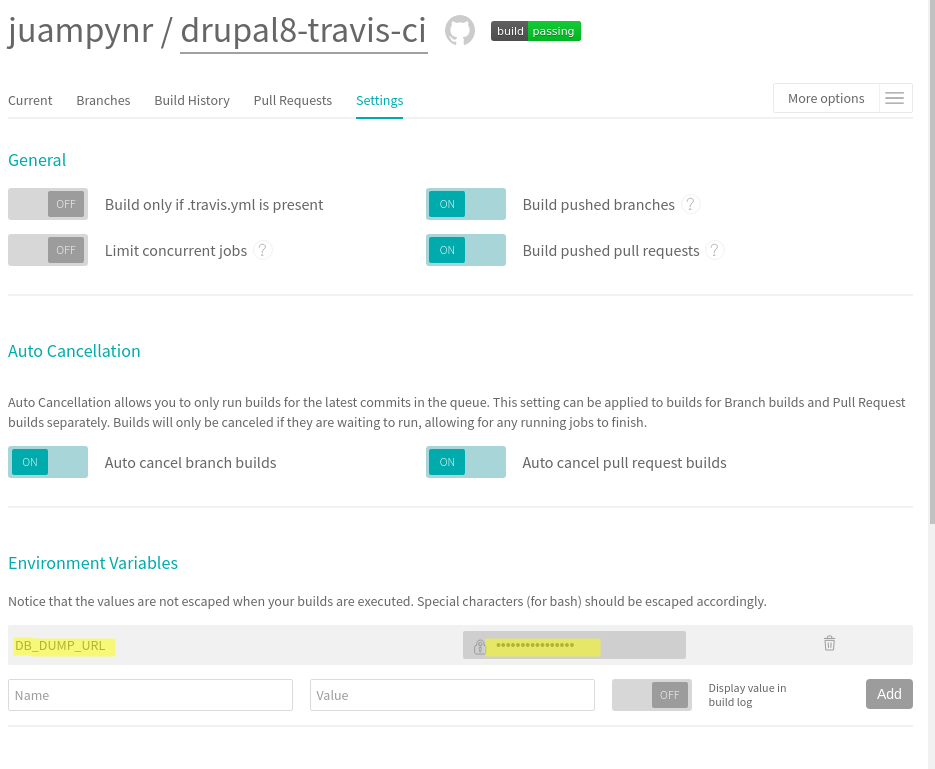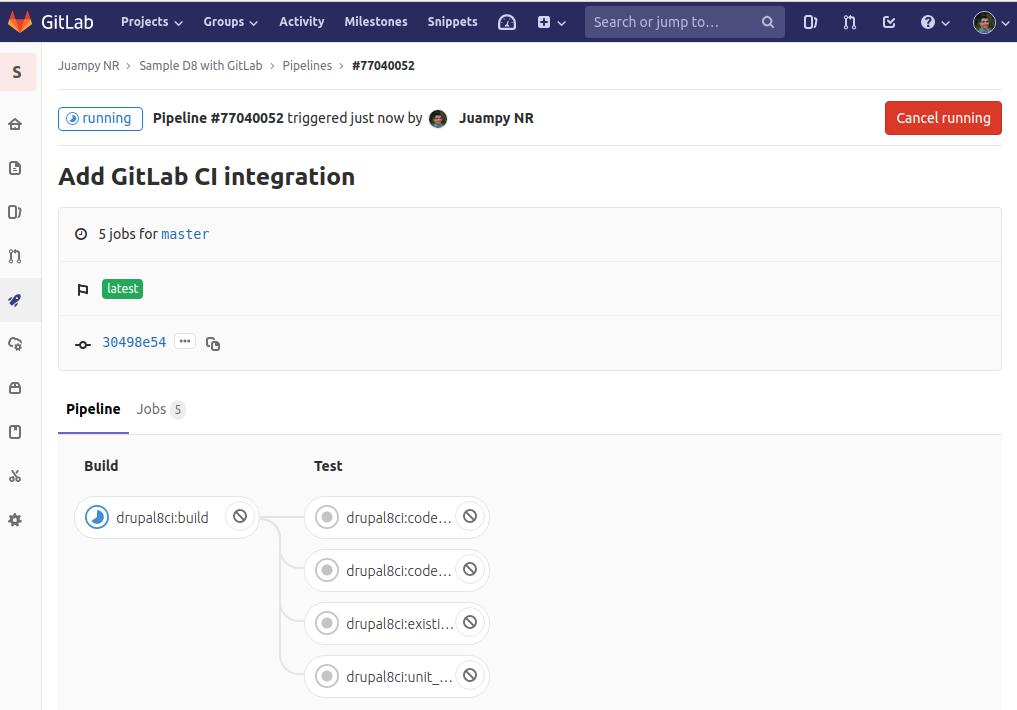Lullabot / Drupal8ci
Programming Languages
Projects that are alternatives of or similar to Drupal8ci
Drupal 8 CI
This repository provides the foundation to implement Continuous Integration in a Drupal 8 project using any of the following CI providers:
To install, simply run the respective installer and allow the CI provider that you chose to watch repository changes to start building on every pull request.
If you want to test an individual module instead of a Drupal project, see Andrew Berry's drupal_tests.
Here is a clip that shows how it works for CircleCI.
Requirements
The scripts assume that you have a Drupal 8 project created using drupal-project, which sets a well known foundation. If your project's directory structure differs from what drupal-project sets up, you will need to adjust the CI scripts.
It's also recommended to adjust your project to add a subset of the settings.php file into
version control and rely on settings.local.php for setting the database connection. See this
commit
which contains these changes among other ones. The CI scripts have their own settings.local.php
which is copied at build time into web/sites/default.
Installation
Each CI tool has its own installer, which extracts the required files to run the jobs. It also adds a demo module with tests.
Choose a CI tool from the list below and follow its installation steps.
CircleCI
Demo repository | Deep dive article
Open a terminal and run the installer from the root of your project:
curl -L https://github.com/lullabot/drupal8ci/raw/master/setup-circleci.sh | bash
Sign up at CircleCI and allow access to your project's repository.
Happy CI-ing! :-D. From now every time you create a pull request, CircleCI will run the set of jobs and report their result like in the following screenshot:
For an overview of the CircleCI features, have a look at this article from the Lullabot blog.
Using a custom Docker image
The CircleCI configuration file uses a custom Docker image that extends from the official Drupal image and it is hosted at Docker Hub. If this image does not fit your project's architecture, then have a look at its Dockerfile and consider creating your own image based out of it.
Setting up the update path
The Behat job requires a running Drupal 8 site. The repository contains the code, but for running tests in a realistic environment you need:
1. A recent copy of the production environment's database
If you have Drush site aliases, then at the CircleCI dashboard go to the project's permissions
and add an SSH key. Next, add drush @my.alias sql-cli to the Behat job at .circleci/config.yml.
Alternatively, upload a sanitized database dump somewhere. For example the demo project uses a Dropbox URL via an environment variable which is set at the Circle CI web interface like in the following screenshot:
2. The production environment's files directory
If you have a site alias, then add drush rsync @my.alias @self to the Behat job. Alternatively,
use Stage File Proxy module.
Travis CI
Demo repository | Deep dive article
Open a terminal and run the installer from the root of your project:
curl -L https://github.com/lullabot/drupal8ci/raw/master/setup-travis-ci.sh | bash
Sign up at Travis CI and allow access to your project's repository:
Happy CI-ing! :-D. From now on every pull request will trigger a build in Travis and its progress will be visible like in the following screenshot:
For you to see the result of the individual jobs, you need to click at the Details link from the above screenshot:
Setting up code coverage reports
Coveralls.io is a third party tool that can host and present PHPUnit code coverage reports in a neat way within a pull request. Here is how to set it up:
Register at https://coveralls.io using your GitHub account and then add your repository like in the following screenshot:
Then take the chance to adjust a couple settings to get cleaner feedback in pull requests:
That's it! Here is a sample report which you can see by clicking at Details at the pull request's status message:
Setting up the Behat job
The Behat job requires, in order to test the behavior of your project:
1. A recent copy of the production environment's database
If you have Drush site aliases, and your repository is private, then follow these
instructions to add an SSH key.
Next, set up a drush site alias. Finally, adjust the Behat job to run drush @my.alias sql-cli.
Alternatively, upload a sanitized database dump somewhere and set up the environment variable so the job can download it. For example the demo project uses a Dropbox URL via an environment variable referenced below:
2. The production environment's files directory
If you have a site alias, then add drush rsync @my.alias @self to the Behat job. Alternatively,
use Stage File Proxy module.
GitLab CI
Demo repository | Deep dive article
Open a terminal and run the installer from the root of your project:
curl -L https://github.com/lullabot/drupal8ci/raw/master/setup-gitlab-ci.sh | bash
Review, commit, and push the resulting changes. After doing that, navigate to the project's homepage at GitLab and open the CI / CD >> Pipelines section. You should see a running pipeline like the following one:
Database setup
In order to build a Docker image with your project's database. Run the one-line installer mentioned above and then follow the instructions at the resulting scripts/database directory in your local environment.
Troubleshooting
Class "\Drupal\Tests\Listeners\DrupalStandardsListener" does not exist
If you get this error at the unit and kernel tests jobs, then it means that your
project uses Drupal 8.5 or newer, which introduced a few changes at web/core/phpunit.xml.dist.
To fix this, overwrite .circleci/config/phpunit.xml with .circleci/config/phpunit-drupal-8.5.xml
if you are using CircleCI, or with .travis/config/phpunit-drupal-8.5.xml if you are using
Travis CI.
GitHub Actions
Open a terminal and run the installer from the root of your project:
curl -L https://github.com/lullabot/drupal8ci/raw/master/setup-github-actions.sh | bash
Review, commit, and push the resulting changes. After doing that, navigate to the repository's homepage at GitHub and open the Actions tab. You should see a running workflow like the following one:
Database setup
In order to build a Docker image with your project's database. Run the one-line installer mentioned above and then follow the instructions at the resulting scripts/database directory in your local environment.
Troubleshooting
Class "\Drupal\Tests\Listeners\DrupalStandardsListener" does not exist
If you get this error at the unit and kernel tests jobs, then it means that your
project uses Drupal 8.5 or newer, which introduced a few changes at web/core/phpunit.xml.dist.
To fix this, overwrite .circleci/config/phpunit.xml with .circleci/config/phpunit-drupal-8.5.xml
if you are using CircleCI, or with .travis/config/phpunit-drupal-8.5.xml if you are using
Travis CI.

